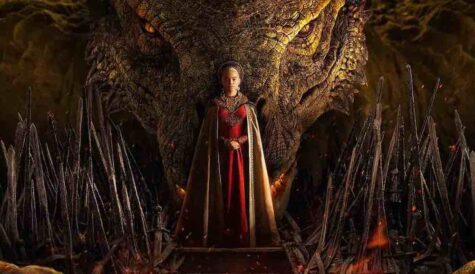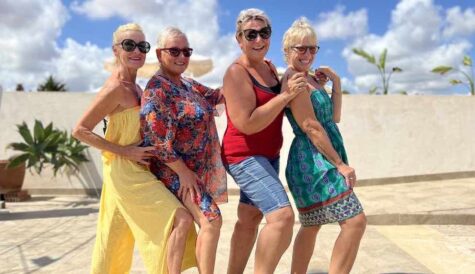New channels for factual
Documentary producers and distributors already had it tough before the recession. With the chances of a fully funded project slim and a shrinking number of slots for docs on the large free-to-air channels the landscape is challenging.
“It’s a supply-and-demand issue,” one factual buyer says privately. “Sometimes there’s a glut of content. It’s good news for the networks as there’s lots to pick from and we can be a bit choosy. It’s not good if you’re one of the thousands of distributors out there.”
There are, however, new customers for docs and factual programming.
In the multichannel world, Discovery, National Geographic and AETN with its History, Bio and C&I channels have been the biggest buyers of factual programming for years. But there are numerous other options for distributors prepared to look at regional and country-specific channels.
Liberty Global-owned Chellomedia operates a range of channels throughout Europe including two dedicated factual offerings, Odisea in Iberia and Spektrum in central and eastern Europe. Odisea and Spektrum, which Chellomedia bought from HBO in 2008 for e60 million, fill their schedules with a mix of acquired programming and local productions. Local shows include Spektrum’s On the Spot, in which journalists investigate news stories, and Odisea’s Module 8, about the Spanish prison system.
“We’re not genre specialists, but we do have a big presence in factual,” says Chellomedia COO Niall Curran. “There are some strong international channels, but we think a real strength is that we can compete effectively by offering something localised with local positioning, programming, presence and voice. The thematic channel landscape is shaped by the position of Discovery and Nat Geo, but they are reliant on huge production machines in the US. We see an opportunity in being the leading local player.”
Some market-watchers cite an over-supply of factual and documentary programming, which allows buyers to drive down prices and be choosier.
“We’re not relying on spending less and less to make money from our factual channels,” says Susan Elkington, executive VP, entertainment development at Chellomedia. “We’re not programming a channel with content coming from the US. We’re very focused on working with UK factual producers and meeting producers and distributors at events like Sunnyside and MIP and we’re a significant client for those companies as we are a volume buyer.”
Meanwhile, new factual-specific channels are springing up and others, like BBC Worldwide’s BBC Knowledge, are extending their footprints. There are also channels that specialise in programming in a different genre but still want some factual content. ABC3, the new digital kids channel from the Australian public broadcaster, for example, is buying docs.
The Sundance channel is another new destination for factual content having recently launched in Asia and Europe. Previously Robert Redford’s channel, it is now owned by Rainbow Media, the channel operator in turn owned by US cabler Cablevision. Its schedule is predominantly indie films and docs.
Harold Gronenthal, Rainbow’s senior VP and general manager of programme acquisitions and international development, says he’s already receiving hundreds of emails a day from producers and distributors keen to work with Sundance, so it is important to get the pitch right.
He says: “People should look at Sundance as a paragon of indie culture, somewhere to present content about independent lifestyles and mindsets and that’s what we’re looking for. It’s good to know about stuff ahead of time so we don’t mind email pitches, as long as people recognise that we are besieged with those.”
Green programming is on the Sundance shopping list given its green strand and success with The Lazy Environmentalist in which presenter Josh Dorfman helps people find practical solutions to environmental problems. It also has in-house produced series such as Brick City, a five-part documentary about Newark mayor Cory A. Booker.
“We’ve been fairly actively acquiring and also looking at some level of coproduction, or rather pre-buys,” Gronenthal says. “We know viewers are intrigued by the Sundance brand and also recognise that we need to tweak the international channel from market to market – that’s one area where acquisitions can play a role, they enable us to tweak the line-up on the different channels.”
Sundance has done deals for packages of programming with 3DD and Beyond International as well as inking smaller-scale deals with Passion and DCD. “Now we’re not looking for volume, we’re looking for individual shows and to pre-buy new shows,” Gronenthal says.
Another new avenue to exploit is the raft of digital terrestrial TV (DTT) channels launching around the world. As the main free-to-air channels become more mainstream, their spin-off DTT channels are often a home for more specialised offerings.
DTT is a particularly interesting area for factual producers and distributors as governments generally award public broadcasters space on a DTT platform and pubcasters are invariably the biggest commissioners and acquirers of documentary programming. Distributors will often have a relationship with the public service broadcaster in question, especially as responsibility for acquiring content for DTT channels often falls to an existing buyer at the channel.
“We have found we have a lot of new business with DTT channels, especially where the public broadcaster is launching a new service,” says Bo Stehmeier, director of sales at distributor Off the Fence. “They may have content already for their main channels, but it might not be cleared for the new channel. As we’re working with companies we know, the ‘legal plumbing’ and contracts are in place. The license fees are not in the same range, but it’s a new home for the content.”
Similarly, most public broadcasters are looking at launching high definition channels and need content to fill these. High-end documentaries are perfect as a showcase for the higher-resolution pictures HD offers.
Factual becomes less of a difficult genre the more it becomes popular factual and the more it becomes factual entertainment. Discovery and others have increasingly strayed from their roots as purveyors of classic factual fare to become lifestyle channels that also air reality and entertainment content.
“As people have gone in search of audiences they have stretched the envelope of what it means to be a documentary channel,” says Chellomedia’s Curran.
New channels in developing markets might not give distributors huge license fees, but they are at least new customers. African pay TV is developing apace and the likes of DTT channel ODM in South Africa want factual shows.
New platforms are also rolling out in developing markets. Swedish company Next Generation Broadcasting, for example, has teamed with Kenyan company Digital Broadcasting Transmex to launch a pay TV service in Kenya marketed under the Smart TV moniker. China-based pay TV company Star DTV operates a service in Rwanda with plans to move into Burundi, Kenya, Tanzania and Uganda. Modern Times Group-backed Viasat is also launching in Uganda. Equally, other platforms in Africa have gone away. Gateway Communications’ pay TV service failed last year.
In Asia, US DTH operator Echostar has joined forces with Asian satellite services company AsiaSat to launch a pay TV service. The joint venture DTH service broadcasts from the AsiaSat 4 satellite and offers a range of channels.
There are also homes for content outside of TV. Some public institutions have a natural interest in factual content and working with these is one way a producer or distributor can expand its customer base. UK indie Windfall Films, which makes documentaries including Race and Intelligence: Nature’s Last Taboo for Channel 4, has recently moved into made-for-web content and has also started working with universities.
“It’s a new area for us and positions us in the multiplatform landscape,” explains Windfall’s head of production Birte Pedersen. “There aren’t any pots of money out there for the taking. Factual producers need to be open to working with brands and public bodies and are in a good position to do that as they are used to producing good, clear, high-quality content.”
Turnover and cash-flow are all-important, especially for small companies, but the importance of making digital content cannot always be reduced to dollars and cents. Pedersen says: “No-one is making a lot of money from web content yet, but if you haven’t done it you are in a weaker position. It’s not a huge revenue generator yet, but it might be, so it’s about positioning yourself.”
ITN makes news programmes and its production hub has been repurposing news and factual content for various platforms. It has done deals with Orange, MSN and Google as well as servicing the video players and websites of broadcasters including Living in the UK.
“Content owners are becoming broadcasters and media owners are becoming publishers,” says Mark Browning, commercial director of ITN Productions. “The new model involves creating content for far more outlets than before. There are not as many multi-million pound commissions but there are more of a lower value. It used to be the opinion of one person, the commissioner, that counted, but now there are fewer gatekeepers and more opportunities.”
The ability to go straight to the consumer is exciting and positioning yourself in the new media world is certainly desirable. But making documentary and factual programming generally involves having coproduction partners and various sources of funding. This is where things can get complex, especially if one party is deficit-funding a programme and wants to exploit all rights in return.
UK-based producer ZigZag, which was recently acquired by French media company Banijay, has worked with online video providers Joost, blinkbox and YouTube as well as using its production expertise on commercial projects with Yahoo and Sony.
Commercial director Ben Barrett says factual producers need to weigh the desire to be in the digital space with real-world financial concerns. “Sometimes we carve out digital rights, but if it means a possible reduction in the level of deficit finance in exchange for a revenue share we can’t always do that. If we do have unencumbered rights, we will test the water [with digital services].”
Some digital services, like Babelgum, will pay an upfront license fee. But in the digital world the business model is often a revenue share, sometimes with a minimum guarantee. “We won’t do a revenue share unless there’s a minimum guarantee,” Barrett says. “And if we’re not happy with the guarantee, we won’t do it. As a producer you shouldn’t expect to get more than the MG.”
AETN’s History channel is distributed the world over and a stalwart of the factual channel scene. It wants to use digital content to reach new demos and extend programming franchises beyond TV.
“History is targeting a younger audience now and one way to reach that demographic is to go to where they are, online,” says senior director of international digital media Fabienne Fourquet. AETN has experimented with original web content, for example its shortform video around its Cities of the Underground series.
Recently AETN inked a deal with Samsung to have History content put on the consumer electronics giant’s connected TVs. It also launched one of the most successful branded games ever on the Facebook social network. The Parking Wars game, designed to promote the series of the same name, was getting 5 million page views a day at its peak and had millions of players. “It was the only marketing we did and it worked really well and got a younger audience for the show,” Fourquet says.
However, the broadcaster has, to date, concentrated digital activities in the US or re-used US content elsewhere. The iPhone could change that. “We’re interested in location-based applications and iPhone apps,” Fourquet says. “We will exploit these more in 2010 and maybe then we can create specific content for international markets.”



